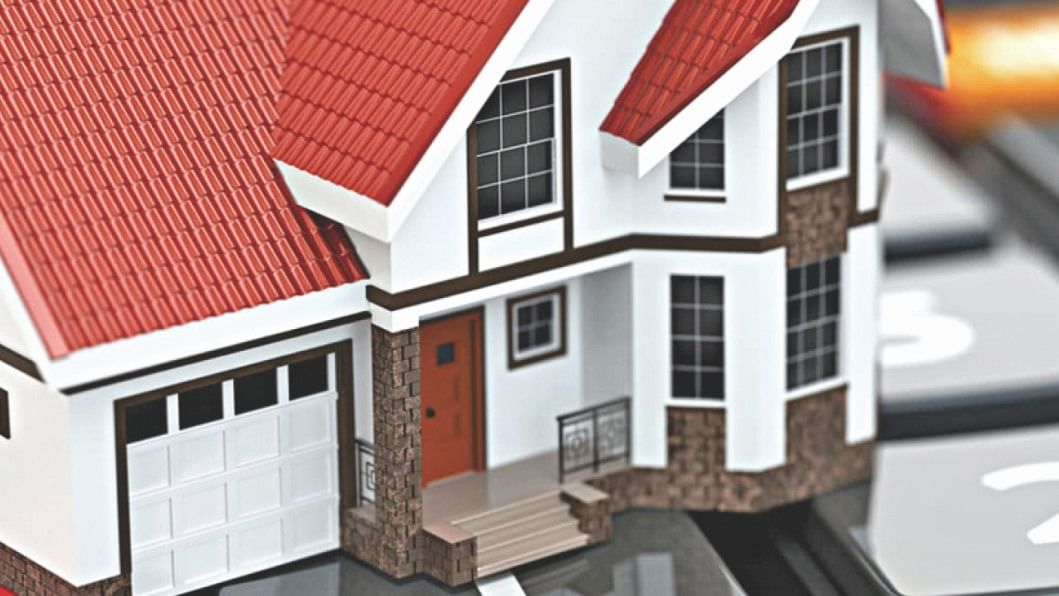Planned urbanisation and environment

The three-decade old real estate sector has predominantly been a business composed of private entrepreneurs catering to the needs of the urban upper middle class, not concerning itself with the low income groups. Public sector initiatives have been limited to the development of some townships and residential colonies mostly concentrated in the capital. As a result, equitable housing opportunities remain a far cry for most urban-dwellers.
In this backdrop, 'posh' apartment development in urban centres made a humble beginning in the mid 1980s, thanks to initiatives by private entrepreneurs. Private developers embarked on housing plot development vigorously, many of them having turned a blind eye to environmental conservation concerns since the late 1990s.
Powerful developers' business opportunism and sheer lack of governance in the field have virtually dominated the entire housing issue debate. Inevitable consequences have been the lack of mass housing, environment conservation and most crucially, planned urbanisation.
Despite having had a draft national housing policy in 1993, governments have been apathetic towards adoption of the policy over the last two decades. The policy has gone through at least five revisions and scrutiny by 25 government departments, but it has yet to gain the seal of approval, far less adoption.
Needless to say, the housing demand is conspicuously acute in urban areas, particularly in the capital Dhaka, port city Chittagong and Sylhet metropolitan area. This is driven primarily by constant migration to those destinations for economic reasons, access to health service, education and social identity.
As Dhaka city remains heavily centralised as the hub of administration, employment, better healthcare, higher education, business, culture, urban amenities and splendour, people of all social strata like to make it their home. This results in an unmanageable influx of population into the city and consequent high demand for housing facility.
But it is estimated that at least one-third of the city-dwellers have no roofs over their heads, their living conditions being almost sub-human, with a high proportion of them being destitute and floating.

As an integral of urban economy, the so-called urban poor eventually lands up in unauthorised slums and as squatters paying heftily for 'housing', but deprived of basic amenities like safe water, sanitation, waste disposal, electricity and gas.
The city slums are built mostly on public lands, but in absence of government management, they in effect, remain hostage to exploitation and domination by local thugs invariably backed by influential godfathers.
We urge for a speedy adoption of the national housing policy by the government. For this would oblige the government to ensure low cost affordable housing for all across the country based on population ratio and proportionate housing needs, says Salma A Shafi, an architect-planner.
The policy advocates for equal and inclusive affordable housing for all, adds Salma, who is honorary treasurer of the Centre for Urban Studies and has worked on low cost and affordable inclusive housing solutions over the past three decades.
Citing Mirpur housing township that was initiated by the then Pakistan government and continued through the eighties in independent Bangladesh as an ideal model housing scheme to cater to people of all strata, she said adding that it was a properly planned scheme.
The aggregated contribution of government organisations like Rajuk, National Housing Authority and Public Works Department to the housing needs does not even meet one percent of the total need, according to Salma.
Referring to ongoing Purbachal and Jheelmil housing townships, she said that schemes for such vast land areas would have easily accommodated all kinds of housing needs had those been planned in accordance with low cost housing provisions.
In Malaysia, real estate developers are legally required to build 30% low cost housing units out of a whole range of real estate products they build, said Salma.
The Bhashantek rehabilitation housing project undertaken by the government over a decade back to provide the low income people with 7,560 flats in the capital eventually got mired in irregularities, mismanagement and corruption.

Real Estate & Housing Association of Bangladesh emerged in 1991 with 11 members primarily to safeguard the business interests of private real estate developers. With a total 1,130 members at present, the private developers have delivered an estimated one lakh apartment flats in last two decades, with an average of over 9,000 per year, according to the organisation's declared information.
Private developers have also delivered an average of over 5,000 land plots for housing annually at an exorbitantly high price in and around the capital and other major divisional cities, according to industry sources. The industry insiders however say that the private real estate business that achieved its peak in 2012 suffered a serious meltdown during the subsequent couple of years, thanks to persistent political turmoil in the country.
It suffered a price fall of up to 30% compared to the 2012 baseline. The business experienced growth during 2009 and 2012 with 'unrealistic and unsustainable' price increases.
Therefore, real estate business in the private sector, by and large, has always been a volatile journey, say the leading insiders. Since the 1990s, both population influx into the capital and people's purchasing power have seen a significant rise.
Although, the private real estate sector saw a turn-around again towards the last quarter of 2015, around 8, 000 unsold and under-construction apartments units remain in the pipeline in the face of the fallen price.
Land prices have shot up too, pitting the private developers against the land owners in terms of cutting a deal satisfactory to both sides. To cite an example, according to a pioneer developer, one katha of land in Uttara Sector-10 would have cost BDT 3 lakh in the mid 1990s. By the year 2012, the price skyrocketed by more than 30 times up to BDT 1 crore. It then took a downward turn and now currently costs BDT 70 lakh.
Goodwill of the business too has been eroded through breach of contracts.
The government in the national budgets of recent years provide an opportunity for individuals to legalise undisclosed money by investing in the real estate sector, presumably in the face of heightened pressure from the sector.
Leading economists have argued that such a move would only breed more black money and not contribute much to the productive economic sectors. Between 1972 and 2013, an estimated BDT 13,808 crore was whitened with most of the ill-gotten money parked in the safe avenue of the real estate sector.
The successive governments were expected to have intervened in the real estate business to facilitate housing for all, but sadly they have caved in to the pressure of the powerful real estate developers. So, they go ahead with business, ruthlessly destroying conservable wetlands and rural ancestral homesteads.
In some cases, even the Prime Minister's directives to halt the environmental degradation through wetland encroachments have been ignored. Clearly, a stronger political intervention has been long overdue to firmly apply a brake on harmful commercialisation of the real estate business.
The government in early June 2014 okayed the change of the Detailed Area Plan (DAP) to allow some private housing schemes to develop land on conservable flood flow zones in Rupganj, Turag flood plains and Baridhara of the capital. It happened despite the High Court in June 2011 having directed the authorities to scrap illegal projects, including removal of 75 other real estate projects.
Leading urban planners say that there is no need for filling wetlands and flood flow zones to build homes. At least 35% of the 1,528 square km DAP is earmarked as residential areas and 35% has not been exhausted. If all the residential land were to be utilised, at least one crore more people would be able to live in the capital.
The capital city could accommodate 2.75 crore people at a rate of 350 population density per acre without filling in flood flow zones, river plains, lakes, water retention ponds and canals, as per a DAP estimate.
Rajuk's Purbachal project could accommodate 10 lakh people and Uttara third extension could house another one million. Its Jhilmil project in Keraniganj could be home to 1.33 lakh people.
The powerful realtors have destroyed more than 80% of the capital's conservable floodplains and water retention zones in and around the capital city in the name of housing. Experts tend to maintain that this has been done taking advantage of the stalled implementation of the key recommendations of the DAP.
One key recommendation in the DAP was reclamation of more than 2,500 acres of flood flow zones and agricultural land from illegal housing scheme developers. As a consequence, an unsustainable future is awaiting Dhaka with urban floods and terrible pollution, says Professor Jamilur Reza Chowdhury, who headed the DAP technical committee.
Floodplains are essential for recharging underground aquifers, balancing temperature, and for agriculture and fishing, while water retention zones are crucial for preventing floods.
Rajuk has failed to stop developers from carrying out their illegal private housing schemes, which is an institutional failure of a hugely debilitating kind.
Eminent urban planners apprehend that inevitable consequences of such destruction of flood plains and wetlands would be water-logging; destruction of ecology, rivers and wetlands; food crisis; and health hazards resulting in poor habitability.
The writer is a senior staff reporter, The Daily Star.

 For all latest news, follow The Daily Star's Google News channel.
For all latest news, follow The Daily Star's Google News channel. 



Comments